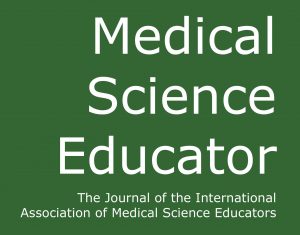
As many of you are aware, Publications Committee members agree to provide a monthly review of an article in Medical Science Educator (MSE). We hope to alert you to something you may have missed, or just spur you to revisit an issue you may have already looked at. We want IAMSE members to get the most of their association journal and to consider publishing their own educational research in MSE when the time comes. Remember access to the journal is a benefit of membership and you can do so by logging in at IAMSE.org and then clicking the IAMSE Publications tab.
In the latest issue, December 2018, I was very interested to read the article “Graphic Stories as Cultivators of Empathy in Medical Clerkship Education.” As one of the newer medical schools, even though my school as a BS/MD Program has existed for 40+ years, we Have now added the last 2 years of medical school education and currently have our first class of 3rd year medical students in clerkship.
There is a substantial literature documenting the erosion of empathy in many medical students, particularly during the first clerkship year. Substantial contributions to this work have been made by Bruce Newton, well known IAMSE member, and his colleagues publishing articles in Academic Medicine and our own Medical Science Educator. As an aside, Bruce was awarded the IAMSE Master Teacher Award in 2016.
In the study reviewed here, small numbers of medical students were recruited from two Canadian medical schools to take part in a qualitative research study aimed at examining empathy in medical students during the clerkship years. Participants completed an online survey that included written responses to open-ended questions regarding a case vignette and then one-on-one in-depth interviews regarding their perceptions of empathy change during clerkship years and the effects of the intervention studied here on maintaining empathy. The results suggest a dynamic interplay between personal factors, the specific clerkship environment and support systems in determining the effects of clerkship years on the empathy expressed by individual students. The specific intervention studied here was the use of graphic short stories, also known as comic books as a potential tool to examine the physician and patient role and to stimulate discussion of empathy role modeled in the comic books. The graphic stories depicted a patient living with Type-2 diabetes and were previously developed for use in an earlier study of pre-clerkship students and their approach to patient interactions. In the study here, the richness of the approach was particularly illuminated in the reporting of themes that emerged from the analysis and specific quotes from the written responses and one-on-one interviews. For me, this is so often the case when reading a qualitative research study. Results described barriers and facilitators of empathy during training including medical education and training, the clinical environment and personal approaches. Not surprising, participants described an inverse relationship between burnout and empathy; as feelings of burnout increase, the capacity for empathy declines. Participants described strategies for preventing burnout and enhancing empathy that fell into several categories:
- Medical education including frequent reminders of the need for empathy, communication workshops, reflective assignments and frequent feedback following clinical encounters.
- Administrative efforts including wellness programs and easily accessible and confidential counseling support.
Finally, the potential role of the comic books was investigated, and participants found them to be an effective medium to remind students of the importance of empathy in their clinical encounters. The extensive discussion in the paper provides further context and characterization of ways to think about maintenance of empathy during the clerkship years. Future directions for this research include investigation of methods for integrating the use of graphic stories into medical curricula and to further evaluate their impact as well as expanding the studies to include larger numbers of students and additional sites.
This paper has stimulated my thought processes about better supporting our clerkship students. In the first two years of medical school when students are together as a cohort, there are numerous communication skills workshops, reflective assignments, narrative medicine sessions and specific discussions of empathy. As students move into clerkship, this cohort effect is lost and although some of the methods used in the pre-clerkship years continue, such as reflective assignments, much is lost. This at the same time that students are dealing with the stressors of clerkship education, the need to prepare for Step 2 exams and to prepare for residency application. This paper has given me much food for thought about how to improve our support of clerkship students to prevent burnout and preserve empathy.
Respectfully submitted,
Dani L. McBeth, PhD
Chair, IAMSE Publications Committee
Associate Dean for Student Affairs
CUNY School of Medicine / Sophie Davis Biomedical Education Program